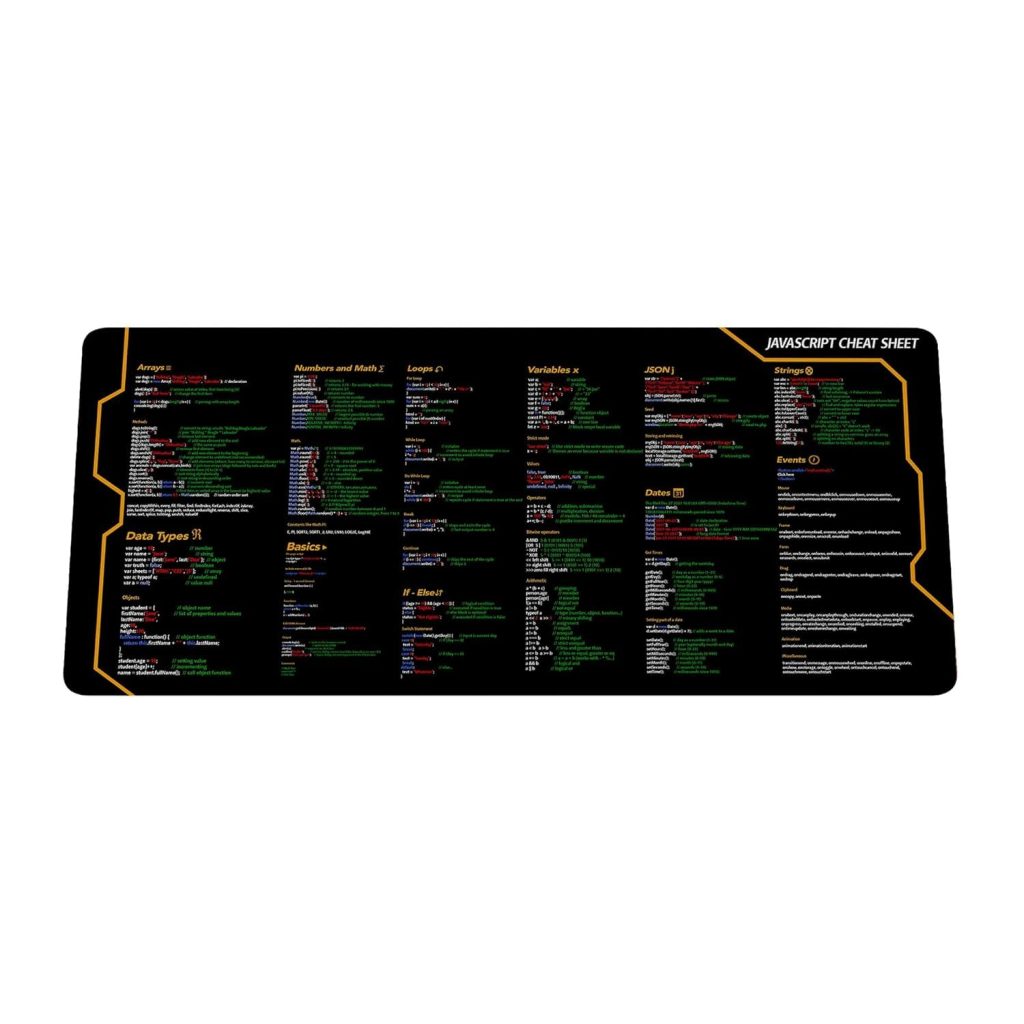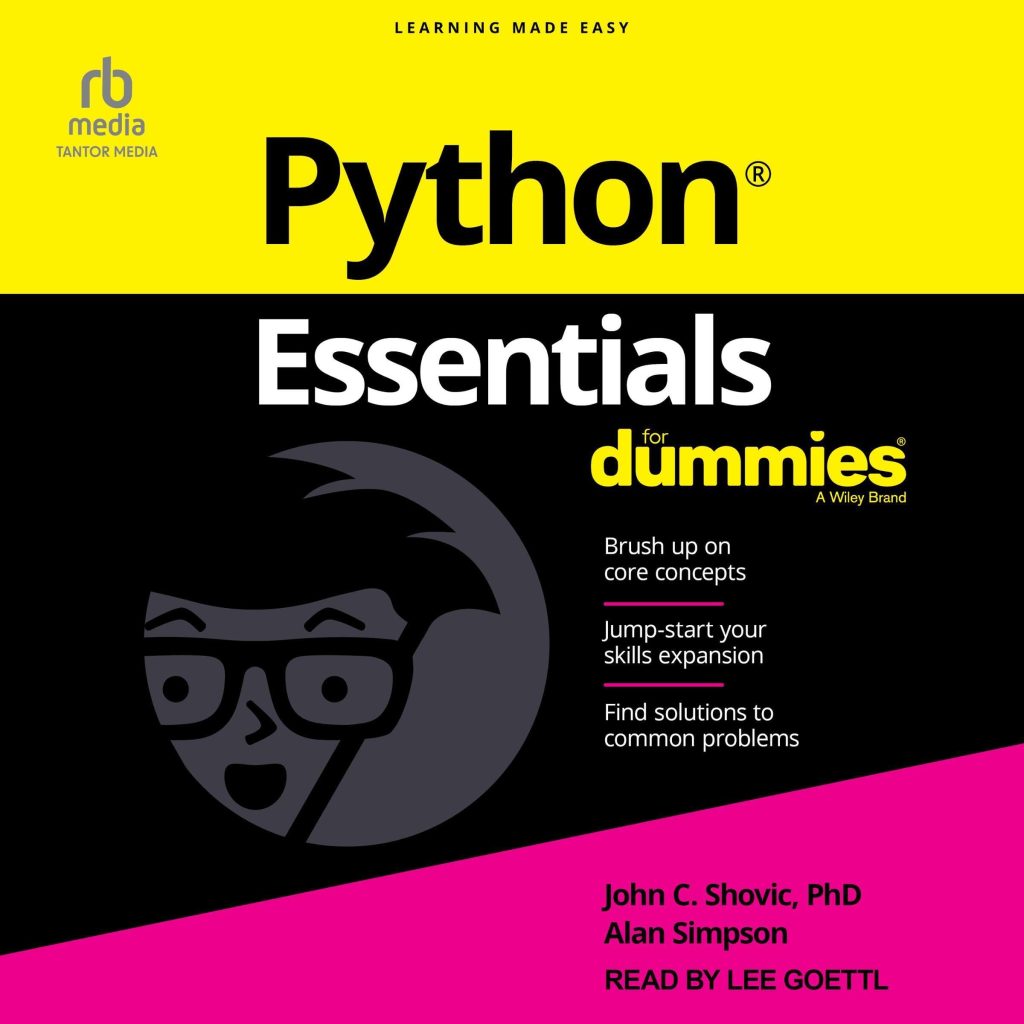
Cross-validation is an important technique in machine learning used to assess how the results of a statistical analysis will generalize to an independent data set. It’s particularly useful in evaluating predictive models by partitioning the original dataset into a training set and a testing set, allowing for a more robust estimation of model performance compared to a simple train/test split. The primary goal of cross-validation is to mitigate issues such as overfitting and to ensure the model’s ability to adapt to unseen data.
A common scenario in model development is to train a model on a certain dataset, evaluate its performance, and then use it to make predictions on new data. However, without a systematic approach to validation, it can be misleading to rely on the model’s accuracy on the training dataset since it may perform well simply because it has memorized the training data.
Cross-validation addresses this by performing the following steps:
- Dividing the dataset into multiple subsets or folds.
- Training the model on a subset of the data and validating it on a different subset.
- Repeating this process multiple times, each time using a different subset for validation and adjusting the remaining data for training.
This method allows for every observation in the dataset to be used for both training and validation, thus providing a more comprehensive evaluation of the model’s performance.
In Python, scikit-learn provides powerful tools to simplify the implementation of cross-validation. Here’s an example of how to perform a simple K-Fold cross-validation:
from sklearn.model_selection import KFold
from sklearn.datasets import load_iris
from sklearn.tree import DecisionTreeClassifier
from sklearn.metrics import accuracy_score
# Load dataset
data = load_iris()
X = data.data
y = data.target
# Initialize model
model = DecisionTreeClassifier()
# Initialize KFold
kf = KFold(n_splits=5)
# Cross-validation process
for train_index, test_index in kf.split(X):
X_train, X_test = X[train_index], X[test_index]
y_train, y_test = y[train_index], y[test_index]
model.fit(X_train, y_train)
predictions = model.predict(X_test)
accuracy = accuracy_score(y_test, predictions)
print(f'Accuracy: {accuracy:.2f}')
Types of Cross-Validation Techniques
Cross-validation techniques can be categorized into several types, each with its own methodology and use cases. Understanding these types helps data scientists choose the most appropriate approach based on the nature of their data and the specific requirements of their modeling task. Here are some of the most common types of cross-validation techniques:
- This technique involves dividing the dataset into K equally-sized folds. The model is trained on K-1 folds and validated on the remaining fold. This process is repeated K times, with each fold used as a validation set exactly once. It provides a good balance between bias and variance, making it a widely used method.
- Similar to K-Fold, this variant ensures that each fold contains roughly the same proportion of each class label as the complete dataset, which is particularly useful for imbalanced datasets. It helps maintain the distribution of classes in both training and validation sets.
- In this extreme case of K-Fold cross-validation, K is set to the number of data points in the dataset. Thus, each training set contains all the samples except one, which is used for validation. This method can be computationally expensive but provides a thorough evaluation.
- In scenarios involving time series data, traditional cross-validation methods can disrupt the temporal ordering of observations. Instead, a time series cross-validation approach retains the ordering by training on past data to predict future data, thereby ensuring that future leakage does not occur.
Each of these techniques has its distinct advantages and is chosen based on the specific nature of the dataset and the objectives of the analysis.
K-Fold Cross-Validation
K-Fold Cross-Validation is one of the most commonly used techniques for model validation in machine learning. This method allows practitioners to evaluate a model’s performance on different subsets of the dataset, helping to ensure that the model generalizes well to unseen data. The primary parameter in K-Fold Cross-Validation is K, which represents the number of equally sized folds that the dataset is divided into.
In a typical K-Fold Cross-Validation process:
- The dataset is randomly shuffled and then split into K folds.
- The model is trained on K-1 folds and validated on the remaining fold.
- Performance metrics such as accuracy, precision, recall, or F1-score are calculated for each iteration.
- After all iterations are completed, the results are averaged to provide a comprehensive evaluation of the model’s performance.
This approach minimizes the risk of overfitting compared to a train/test split, as the model is exposed to different combinations of training and validation data.
Here’s an example of how to implement K-Fold Cross-Validation using scikit-learn:
from sklearn.model_selection import KFold
from sklearn.datasets import load_iris
from sklearn.tree import DecisionTreeClassifier
from sklearn.metrics import accuracy_score
# Load dataset
data = load_iris()
X = data.data
y = data.target
# Initialize model
model = DecisionTreeClassifier()
# Initialize KFold with 5 splits
kf = KFold(n_splits=5)
# Store accuracy scores
accuracy_scores = []
# Cross-validation process
for train_index, test_index in kf.split(X):
X_train, X_test = X[train_index], X[test_index]
y_train, y_test = y[train_index], y[test_index]
model.fit(X_train, y_train)
predictions = model.predict(X_test)
# Calculate accuracy
accuracy = accuracy_score(y_test, predictions)
accuracy_scores.append(accuracy)
print(f'Accuracy for this fold: {accuracy:.2f}')
# Print average accuracy
average_accuracy = sum(accuracy_scores) / len(accuracy_scores)
print(f'Average Accuracy: {average_accuracy:.2f}')
In this example, the dataset is divided into five folds, and the Decision Tree Classifier is trained and evaluated on each iteration. The accuracy for each fold is printed out, followed by the average accuracy across all folds, providing a clear picture of the model’s performance.
K-Fold Cross-Validation can also be tuned based on different values of K. A common choice for K is 5 or 10; however, the optimal value may depend on the size of the dataset and how it influences the training process. Implementing K-Fold helps ensure that the model is both robust and reliable across various scenarios.
Stratified K-Fold Cross-Validation
Stratified K-Fold Cross-Validation builds upon the standard K-Fold Cross-Validation method by ensuring that each fold maintains the same proportion of class labels as the entire dataset. That is particularly valuable when dealing with imbalanced datasets, where certain classes may dominate over others, leading to biased performance estimates. Stratified K-Fold helps preserve the original distribution of the target variable in the training and validation datasets.
In stratified sampling, the dataset is divided into K subsets while maintaining the same class distribution across each fold. This means that if a dataset has a distribution of 70% of class A and 30% of class B, each fold created in the stratified process will reflect this same distribution. This technique reduces variance and provides a more reliable measure of the model’s performance compared to standard K-Fold, especially in classification tasks.
The following steps outline the process of applying Stratified K-Fold Cross-Validation:
- The dataset is partitioned into K folds while ensuring that the class distribution remains consistent across all folds.
- For each fold, the model is trained on K-1 folds and validated on the remaining fold, maintaining the stratified distribution.
- Performance metrics are calculated for each iteration, and the results are aggregated for a comprehensive evaluation.
In practice, implementing Stratified K-Fold Cross-Validation with scikit-learn is simpler. Below is an example using the Iris dataset to show how to utilize this technique:
from sklearn.model_selection import StratifiedKFold
from sklearn.datasets import load_iris
from sklearn.tree import DecisionTreeClassifier
from sklearn.metrics import accuracy_score
# Load dataset
data = load_iris()
X = data.data
y = data.target
# Initialize model
model = DecisionTreeClassifier()
# Initialize StratifiedKFold
skf = StratifiedKFold(n_splits=5)
# Store accuracy scores
accuracy_scores = []
# Cross-validation process
for train_index, test_index in skf.split(X, y):
X_train, X_test = X[train_index], X[test_index]
y_train, y_test = y[train_index], y[test_index]
model.fit(X_train, y_train)
predictions = model.predict(X_test)
# Calculate accuracy
accuracy = accuracy_score(y_test, predictions)
accuracy_scores.append(accuracy)
print(f'Accuracy for this fold: {accuracy:.2f}')
# Print average accuracy
average_accuracy = sum(accuracy_scores) / len(accuracy_scores)
print(f'Average Accuracy: {average_accuracy:.2f}')
In this code snippet, the dataset is divided into 5 stratified folds, and the Decision Tree Classifier is trained and tested on each fold. The accuracy for each fold is recorded and printed, along with the average accuracy across all folds. This method not only provides a more accurate representation of model performance but also ensures that rare classes are adequately represented in both the training and validation sets.
Leave-One-Out Cross-Validation (LOOCV)
Leave-One-Out Cross-Validation (LOOCV) is an extreme case of K-Fold cross-validation where the number of folds (K) is equal to the number of data points in the dataset. Consequently, for each iteration, the model is trained on all the samples except one, which is used as the validation set. This method is particularly thorough, as each data point gets to be the validation sample exactly once, thus providing a very detailed performance analysis of the model.
While LOOCV is beneficial in ensuring that the model is extensively validated, it also has its drawbacks. One of the primary concerns is its computational expense, especially with larger datasets, since it requires training the model as many times as there are samples. As a result, the total number of training and testing iterations could become infeasible with large datasets.
In practice, LOOCV can be implemented easily using scikit-learn. The following code snippet illustrates how to use LOOCV with a dataset and a classification model:
from sklearn.model_selection import LeaveOneOut
from sklearn.datasets import load_iris
from sklearn.tree import DecisionTreeClassifier
from sklearn.metrics import accuracy_score
# Load dataset
data = load_iris()
X = data.data
y = data.target
# Initialize model
model = DecisionTreeClassifier()
# Initialize LeaveOneOut
loo = LeaveOneOut()
# Store accuracy scores
accuracy_scores = []
# Cross-validation process
for train_index, test_index in loo.split(X):
X_train, X_test = X[train_index], X[test_index]
y_train, y_test = y[train_index], y[test_index]
model.fit(X_train, y_train)
predictions = model.predict(X_test)
# Calculate accuracy
accuracy = accuracy_score(y_test, predictions)
accuracy_scores.append(accuracy)
print(f'Accuracy for this iteration: {accuracy:.2f}')
# Print average accuracy
average_accuracy = sum(accuracy_scores) / len(accuracy_scores)
print(f'Average Accuracy: {average_accuracy:.2f}')
In this example, we first load the Iris dataset and then initialize a Decision Tree Classifier. We set up the LOOCV strategy using the LeaveOneOut class from scikit-learn. For each iteration, after training on all but one sample, we evaluate the model’s prediction accuracy. Finally, we average the accuracy scores across all iterations to obtain an overall measure of model performance.
Despite its thoroughness, LOOCV should be used judiciously. If the dataset is large, its computational cost may outweigh the benefits of having every sample tested as a validation set. In such cases, it might be more appropriate to ponder K-Fold or Stratified K-Fold cross-validation based on the specific needs of the problem and dataset characteristics.
Time Series Cross-Validation
In time series analysis, the order of observations is critical because the data points are often dependent on each other over time. Traditional cross-validation techniques such as K-Fold disrupt this temporal structure, potentially leading to models that perform well in validation but poorly in real-world applications. To address this, time series cross-validation techniques maintain this order, allowing us to evaluate how well a model performs in predicting future values based on past data.
Time Series Cross-Validation typically employs techniques like the rolling forecasting origin or expanding window approaches. In these methods, we progressively train the model on increasing amounts of historical data before validating it on a subsequent period. This setup avoids using future data for model training, which is critical for preventing data leakage.
Here’s how the process generally works:
- The dataset is divided into a series of training and validation sets, where the model uses past data (training set) to predict known future data (validation set).
- Each iteration consists of fitting the model to the training set and then evaluating its performance on the validation set.
- The results across these iterations are aggregated to provide a clear understanding of the model’s efficacy.
Below is an example of implementing time series cross-validation using the scikit-learn library, where we utilize a rolling window approach.
from sklearn.model_selection import TimeSeriesSplit
from sklearn.tree import DecisionTreeRegressor
from sklearn.metrics import mean_squared_error
import numpy as np
# Example time series data
data = np.array([[i] for i in range(1, 21)]) # Simple numeric data
target = np.array([i + np.random.rand() for i in range(1, 21)]) # Simple target with noise
# Initialize model
model = DecisionTreeRegressor()
# Initialize TimeSeriesSplit
tscv = TimeSeriesSplit(n_splits=5)
# Store mean squared error scores
mse_scores = []
# Cross-validation process
for train_index, test_index in tscv.split(data):
X_train, X_test = data[train_index], data[test_index]
y_train, y_test = target[train_index], target[test_index]
model.fit(X_train, y_train)
predictions = model.predict(X_test)
# Calculate mean squared error
mse = mean_squared_error(y_test, predictions)
mse_scores.append(mse)
print(f'Mean Squared Error for this fold: {mse:.2f}')
# Print average MSE
average_mse = sum(mse_scores) / len(mse_scores)
print(f'Average Mean Squared Error: {average_mse:.2f}')
In this example, we created a simple time series dataset, initialized a Decision Tree Regressor model, and utilized TimeSeriesSplit from scikit-learn to perform the time series cross-validation. The model is trained on progressively larger datasets, with each fold providing insights into the model’s error while predicting future values.
Using time series cross-validation helps ensure that the model training and testing mimic real-world scenarios, making it essential for reliable time series forecasting. By respecting the temporal order of the data, practitioners can build more robust models that generalize well to unseen future data.
Implementing Cross-Validation with scikit-learn
from sklearn.model_selection import cross_val_score
from sklearn.datasets import load_iris
from sklearn.linear_model import LogisticRegression
from sklearn.model_selection import StratifiedKFold
# Load dataset
data = load_iris()
X = data.data
y = data.target
# Initialize model
model = LogisticRegression(max_iter=200)
# Initialize cross-validation strategy
cv = StratifiedKFold(n_splits=5)
# Perform cross-validation
scores = cross_val_score(model, X, y, cv=cv, scoring='accuracy')
# Display the results
print("Cross-validation accuracy scores:", scores)
print("Mean accuracy:", scores.mean())
In the example above, we are implementing a logistic regression model using scikit-learn’s built-in cross-validation tools. We first load the Iris dataset and initialize a logistic regression model, setting the maximum number of iterations to ensure convergence. We then set up a StratifiedKFold cross-validation strategy with 5 splits. The cross_val_score function automates the process of splitting the data, fitting the model, and scoring each iteration using accuracy as the evaluation metric.
This approach allows for a succinct implementation of cross-validation, ensuring that the entire process is streamlined and easily interpretable. The results output the accuracy scores for each fold as well as the mean accuracy, giving insights into the model’s performance across all iterations.
Another advantage of using scikit-learn for cross-validation is the ability to seamlessly integrate it into a larger machine learning pipeline. For example, you can combine cross-validation with model tuning and selection, which can lead to improved model performance and more reliable validation results.
from sklearn.model_selection import GridSearchCV
# Define a hyperparameter grid
param_grid = {
'C': [0.01, 0.1, 1, 10, 100],
'solver': ['liblinear', 'lbfgs']
}
# Setup the GridSearchCV
grid_search = GridSearchCV(estimator=model, param_grid=param_grid, cv=cv, scoring='accuracy', verbose=1)
# Fit the grid search
grid_search.fit(X, y)
# Best parameters and best score
print("Best parameters found:", grid_search.best_params_)
print("Best cross-validation accuracy:", grid_search.best_score_)
In the code snippet above, GridSearchCV is employed to conduct an exhaustive search over specified hyperparameter values for the logistic regression model. This allows us to optimize hyperparameters such as C, which corresponds to the regularization strength, and solver, which determines the optimization algorithm. The cross-validation strategy is still maintained throughout the tuning process, ensuring that our model remains generalizable on unseen data.






